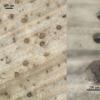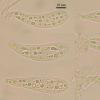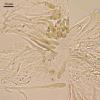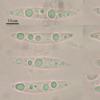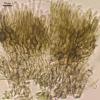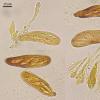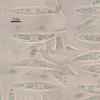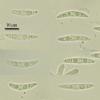
18-12-2025 21:17
Pol DebaenstThe identification took me to Byssonectria deformi

15-12-2025 07:09
 Danny Newman
Danny Newman
indet. Rutstroemiaceae sp. on unk. fallen leavesMc

19-12-2025 10:10
Patrice TANCHAUDBonjour, récolte réalisée en milieu dunaire, a

18-12-2025 17:23
 Bruno Coué
Bruno Coué
Bonjour,je serais heureux d'avoir votre avis sur c

18-12-2025 18:07
Margot en Geert VullingsThese plumes were found on rotten wood.They strong

17-12-2025 18:35
 Michel Hairaud
Michel Hairaud
Bonjour à tous/Hi to everyone I am passing along

15-12-2025 15:48
 Danny Newman
Danny Newman
Melanospora cf. lagenaria on old, rotting, fallen

15-12-2025 15:54
 Johan Boonefaes
Johan Boonefaes
Unknown anamorph found on the ground in coastal sa

15-12-2025 21:11
 Hardware Tony
Hardware Tony
Small clavate hairs, negative croziers and IKI bb
Hysteronaevia olivacea
Nina Filippova,
12-02-2013 11:03
Inhabitant of Carex rostrata leaves in bog.
Apothecia immersed, circular to short-ellipsoid, 140 - 250 mk, opening by ellipsoid lid (rarely by irregular patches), disc pale yellowish-brownish, surrounded more or less conspicuous brown edge.
Excipulum from textura angularis, cells with thickened walls, brown, about 10 mk in diam at base and flanks, more prismatic (10 x 5) to the edge, end row of cells (hairs) cylindrical, two-celled, to 25 x 5, tips obtuse, smooth; asci clavate, clamped, inamyloid, 58,7-66,6 x 14-17,5; paraphyses cylindrical with enlarged clavate brownish end segment, lower part segmented, about 3 mk broad, with outgrowths or branched, upper segment enlarged to 5 mk, with yellowish-brown content, rare with incrustation, exeeding the asci for about 10-15 mk, embedded in gelatinose substance; spores fosoid, some curved, some with obtuse end, many-guttulate, 25 (22,1-29) x 4,5 (3,8-4,8) (Q=5,6; N=13).
Hans-Otto Baral,
12-02-2013 21:33

Re : Hysteronaevia olivacea
Could you please check the iodine reaction here also after KOH?
The Hysteronaevias that I know have much broader or longer spores.
Zotto
The Hysteronaevias that I know have much broader or longer spores.
Zotto
Nina Filippova,
13-02-2013 15:23
Re : Hysteronaevia olivacea
Yes, spores described as "narrowly oblong" by Nannfeldt, and pictured in Defago (1967) and Scheuer (1988) with more obtuse ends then in my specimen. I checked several frbs, all they had this fusoid shape. But other features quite similar, and host (Carex rostrata) often reported for H. olivacea. I will see if it shows up in other collections and what spores shape will there.
Asci inamyloid (in lugol, then after KOh and heat). There picture in lugol.
Asci inamyloid (in lugol, then after KOh and heat). There picture in lugol.
Nina Filippova,
13-02-2013 17:33
Hans-Otto Baral,
13-02-2013 18:56

Re : Hysteronaevia olivacea
I looked only in Defago, she says spores 18-26 x 5-6 µm for H. olivacea (probably dead state).
The living spores in HB 4138b are 5.5-6 µm, and those by Enrique start6 with 6 µm upwards.
The spore ends are acute in both finds.
Helpful could be the spore contents in your specimens (vital state), but I suppose they are not alive anymore.
Zotto
The living spores in HB 4138b are 5.5-6 µm, and those by Enrique start6 with 6 µm upwards.
The spore ends are acute in both finds.
Helpful could be the spore contents in your specimens (vital state), but I suppose they are not alive anymore.
Zotto
Nina Filippova,
14-02-2013 06:07
Hans-Otto Baral,
14-02-2013 08:28

Re : Hysteronaevia olivacea
Yes, surely in KOH :-(
Nina Filippova,
14-02-2013 08:57
Re : Hysteronaevia olivacea
Yes, because "oil is lumped together in one or two guttules?" (Stip wrote). So, i hope it will found more in summer.

